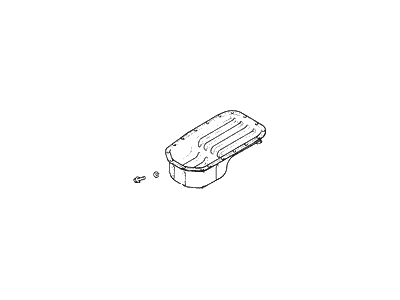×
- Hello
- Login or Register
- Quick Links
- Live Chat
- Track Order
- Parts Availability
- RMA
- Help Center
- Contact Us
- Shop for
- Hyundai Parts
- Hyundai Accessories


My Garage
My Account
Cart
Genuine Hyundai Excel Oil Pan
Oil Drain Pan- Select Vehicle by Model
- Select Vehicle by VIN
Select Vehicle by Model
orMake
Model
Year
Select Vehicle by VIN
For the most accurate results, select vehicle by your VIN (Vehicle Identification Number).
2 Oil Pans found
Hyundai Excel Pan Assembly-Engine Oil
Part Number: 21510-24000$75.84 MSRP: $106.55You Save: $30.71 (29%)Ships in 1-3 Business DaysHyundai Excel Pan Assembly-Engine Oil
Part Number: 21510-21010$93.72 MSRP: $131.68You Save: $37.96 (29%)Ships in 1-3 Business Days
Hyundai Excel Oil Pan
If you are looking for affordable high-quality OEM Hyundai Excel Oil Pan, then you have come to the prime place. Our website provides a large amount of genuine Hyundai Excel Oil Pan at unbeatable prices. All our parts come backed with the manufacturer's warranty.
Hyundai Excel Oil Pan Parts Questions & Experts Answers
- Q: How to remove and install the oil pan on 2011 and earlier Hyundai Excel?A:If you want to change the oil pan, you need to first disconnect the cable from the Minus terminal of the battery and apply the parking brake, and put the blocks under the rear wheels. Lift up the front of the vehicle until it is off the ground and well supported on jack stands. Then, next to the shielding, set aside the drivebelt splash shield; equally, also, take off the oil-dipstick and empty the engine-oil. Lose the bolt connected to the exhaust downpipe from the Exhaust Manifold, unscrew the other bolts and drop the oil pan from the car. To remove the oil pan you unscrew all the bolts along its perimeter and then knock it gently with a rubber mallet the separating line you will notice that sometime it is very fixed you will use either a soft-face hammer or even a wooden block. While the oil pan is off, lift up the oil pump pick-up/strainer by the ears if it clogged or split, if needed for cleaning or replacement unbolster the studs. For installation, make sure that the surfaces which are to be sealed are clean free of old gasket materials and inspecting for distortions especially on stamped-steel pans. If RTV sealant is to be used then put down a 1/8 to 3/16 inch bead of the member on the oil pan flange, if a gasket is to be used then putting a coat of gasket sealer to be put before fixing the member. Insert the oil pan into its proper location and just start the bolts loosely and then ferquently as a single freeze go a little tighter before the bolts are tightened to the proper torque. Last, put back all the parts, add the correct oil in the crankcase, start the engine to ensure there are no leaks, and finally test the car on the road to ensure that there are no leaks.















